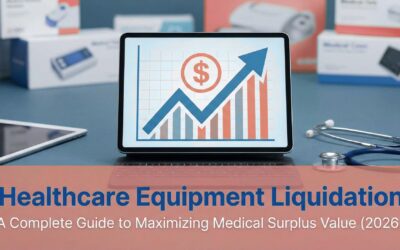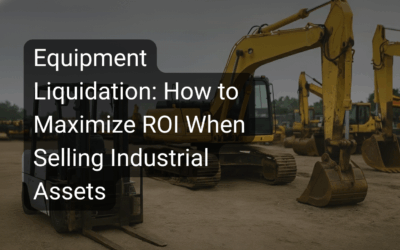Understanding the Circular Economy and Its Relevance to Investment Recovery
The concept of a circular economy is gaining traction globally as a sustainable alternative to the traditional linear economy. Unlike the linear model, which follows a “take, make, dispose” approach, the circular economy emphasizes reducing waste, reusing resources, and recycling materials to create a closed-loop system. This model aims to decouple economic growth from resource consumption, thereby fostering environmental sustainability, economic resilience, and social well-being.
Principles of the Circular Economy
The circular economy is built on three core principles:
- Eliminate Waste and Pollution: By designing out waste and pollution from the start, the circular economy aims to prevent environmental degradation.
- Circulate Products and Materials: Keeping products and materials in use for as long as possible through practices like maintenance, reuse, refurbishment, and recycling.
- Regenerate Natural Systems: Ensuring that economic activities support the regeneration of natural ecosystems rather than depleting them.
Benefits of the Circular Economy
Environmental Benefits:
- Reduced Waste: By keeping materials in use, the circular economy significantly reduces the amount of waste that ends up in landfills and oceans.
- Lower Emissions: Circular practices can cut down greenhouse gas emissions by reducing the need for new raw materials and minimizing waste disposal.
- Resource Conservation: Efficient use of resources helps conserve natural habitats and biodiversity.
Economic Benefits:
- Cost Savings: Businesses can save on material costs by reusing and recycling resources.
- Job Creation: New roles in recycling, refurbishing, and sustainable design can boost employment.
- Market Opportunities: The circular economy opens up new markets for recycled and refurbished products.
Social Benefits:
- Community Development: Local recycling and refurbishing initiatives can strengthen community ties.
- Innovation: The need for sustainable solutions drives technological and business model innovations.
Circular Economy and Investment Recovery
Investment recovery is a critical component of the circular economy. It involves the strategic management of surplus assets to maximize their value and minimize waste. The Investment Recovery Association (IRA) plays a pivotal role in this process by providing resources and support to organizations engaged in surplus asset management.
How Investment Recovery Supports Circular Economy Principles
- Surplus Sales and Marketing: By selling surplus assets, organizations can extend the life cycle of products and materials, keeping them in use and out of landfills.
- Surplus Equipment: Reusing and refurbishing surplus equipment reduces the need for new manufacturing, conserving resources and energy.
- Environmental & Demolition Services: Proper disposal and recycling of materials from demolition projects prevent environmental contamination and promote resource recovery.
- Metals, Scrap Management, Wood: Efficient scrap management ensures that valuable materials are recycled and reused, reducing the need for virgin resources.
- Computer, IT & Electronic eScrap: Responsible recycling of electronic waste prevents hazardous materials from polluting the environment and recovers valuable metals and components.
The Role of the Investment Recovery Association
The IRA provides a comprehensive directory of services and resources to support investment recovery professionals. This includes:
- Surplus Asset Management: Helping organizations identify, manage, and sell surplus assets.
- Regulatory Compliance: Ensuring that asset disposal practices comply with environmental regulations.
- Circular Economy Methodologies: Promoting practices that align with the principles of the circular economy.
- Environmental Stewardship: Encouraging sustainable practices that protect the environment.
- Zero Waste Attainment: Aiming for zero waste through efficient resource use and recycling.
- ROI Maximization: Helping organizations achieve a high return on investment from their surplus assets.
By integrating these practices, the IRA helps organizations contribute to a sustainable future while realizing significant economic benefits. The transition to a circular economy is not just an environmental imperative but a strategic approach to fostering long-term economic and societal well-being.In conclusion, the circular economy offers a viable path towards sustainable growth by rethinking how we produce, consume, and dispose of goods. The Investment Recovery Association plays a crucial role in this transition by providing the tools and resources needed to manage surplus assets effectively, ensuring that they remain valuable resources within the economy.


